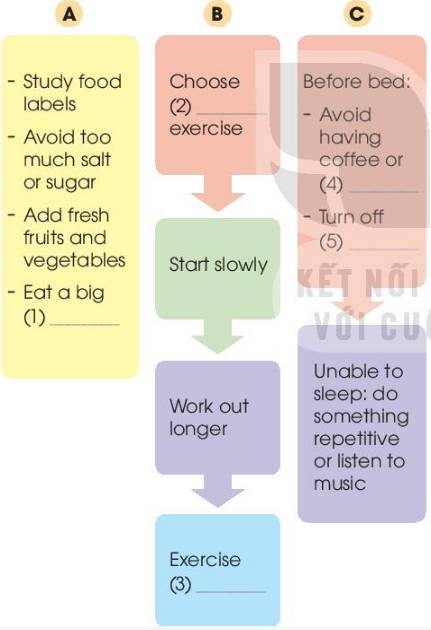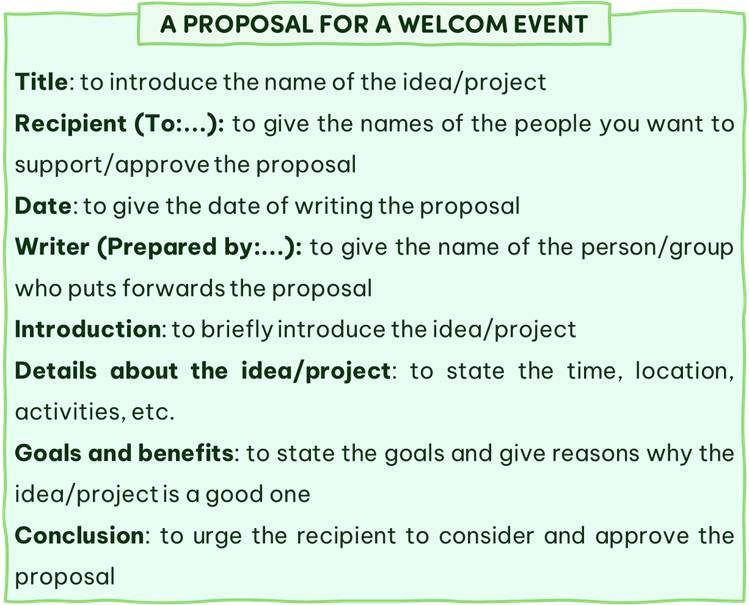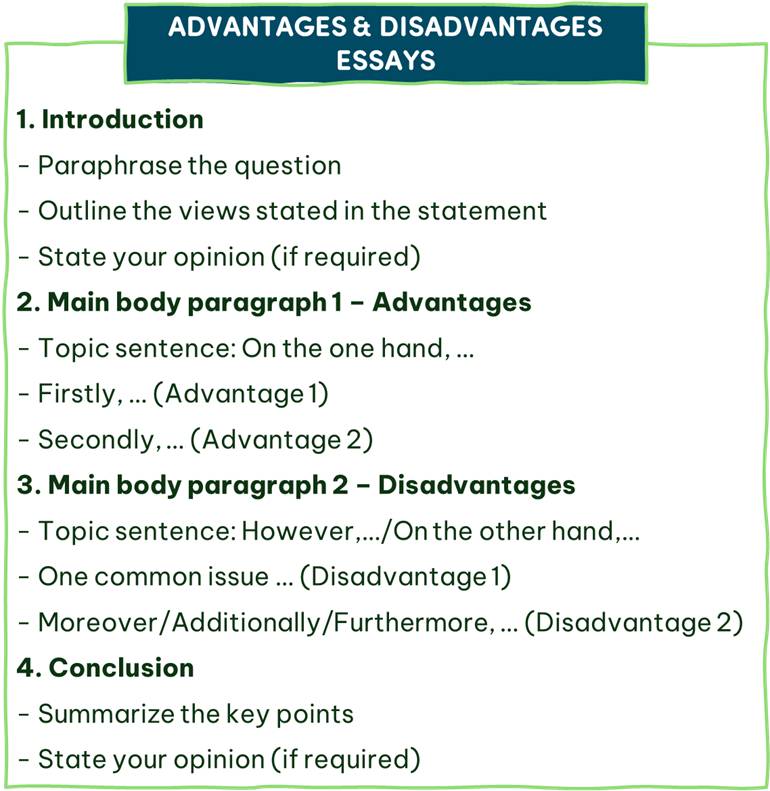Hãy nhập câu hỏi của bạn vào đây, nếu là tài khoản VIP, bạn sẽ được ưu tiên trả lời.

(1): solutions
(2): best option
(3): to-do lists
(4): night's sleep

1 - 18 | 2 - technical education | 3 - higher education |
4 - university courses | 5 - bachelor’s degree |
1. 18
Thông tin: but in England they must stay in full-time education or do a training course until the age of 18.
(nhưng ở Anh, học sinh phải tiếp tục học toàn thời gian hoặc tham gia một khóa đào tạo cho đến năm 18 tuổi.)
2. technical education
Thông tin: That is why vocational education is often referred to as career education or technical education.
(Đó là lý do tại sao giáo dục nghề nghiệp thường được gọi là giáo dục nghề nghiệp hoặc giáo dục kỹ thuật.)
3. higher education
Thông tin: Many students still go on to higher education after receiving their vocational qualifications.
(Nhiều sinh viên vẫn tiếp tục học cao hơn sau khi nhận được bằng cấp nghề.)
4. university courses
Thông tin: Exams are taken at the end of the two-year course, and the grades are used to apply for university courses.
(Các kỳ thi được thực hiện vào cuối khóa học hai năm và điểm số được sử dụng để nộp đơn vào các khóa học đại học.)
5. bachelor’s degree
Thông tin: At university, students study for at least three years in order to get a bachelor’s degree.
(Tại trường đại học, sinh viên học ít nhất ba năm để lấy bằng cử nhân.)

It's possible that the green color on the cover represents nature or the environment, which is a central theme of the book. I can also see a river on the left of the book. I guess this book is about protecting the environment

a) countable nouns: document, gadget
(danh từ đếm được: tài liệu, tiện ích)
b) uncountable nouns: habit, health, information, money, music, software, website, homework
(danh từ không đếm được: thói quen, sức khỏe, thông tin, tiền bạc, âm nhạc, phần mềm, trang web, bài tập về nhà)

Dear Anna,
I'm glad that you like the cooking book. It has many interesting recipes in there, you should try one. By the way, Sunday sounds great, I'll come over at 4 p.m.
See you soon,
Linda
Hi Anna,
I'm glad that you're finding my book on healthy cooking helpful.
I am delighted to join you at your home this Sunday to find out some recipes from the book with you.
Unfortunately, my mango trees has not produced any mangoes at the time, but by the way I will buy some fresh mangoes from the market on the way to your place for one of the dishes.
Looking forward to seeing you soon.
Warm regards.
Linda.

Living in a smart city brings many benefits and disadvantages. In this article, I will present some pros and cons of living in a smart city.
The first advantage of living in a smart city is convenience. Information and communications technology is integrated into urban systems, helping to provide public services more effectively. For example, through mobile applications, people can easily search for information about transportation, destinations, and entertainment activities. Furthermore, the smart traffic system helps reduce congestion and save travel time.
Another advantage of smart cities is energy saving and environmental protection. Advanced technologies are applied to manage and use resources effectively. For example, automatic lighting and temperature regulation in buildings help save energy. In addition, the use of smart public transport and self-driving cars helps reduce polluting emissions.
However, living in a smart city also has disadvantages. One of them is the issue of information security. With the widespread use of information technology, the risk of personal information insecurity and privacy violations increases. This requires strong security measures to ensure the safety of people's personal data.
Another drawback of smart cities is their dependence on technology. If technology systems fail or are attacked, public services could be disrupted. This poses challenges for maintaining stability and ensuring security of smart cities.
In short, living in a smart city brings many benefits such as convenience and energy savings. However, it is also necessary to pay attention to information security issues and dependence on technology. To make the most of the advantages and minimize the disadvantages, smart investment and management from city managers is needed.








1 - breakfast
2 - suitable
3 - regularly
4 - energy drinks/exercising
5 - electronic devices
1. breakfast
2. suitable
3. regularly
4. energy drinks
5. electronic devices